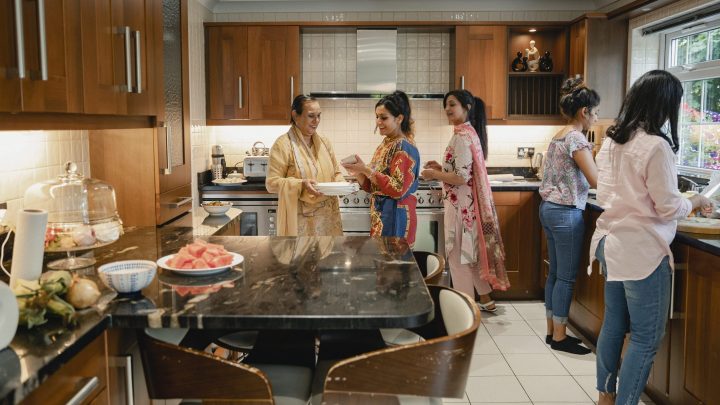
Why multigenerational households are making a comeback in a big way
Why multigenerational households are making a comeback in a big way

The multigenerational home was the typical living arrangement in mid-19th century America. A century later, the multigenerational home was the exception rather than the norm. Yet, almost unremarked, several forces combined over the past half century to gradually reinvigorate the idea that multiple generations living together is a financially smart and emotionally rewarding choice.
From the 1950s into the 1980s, America evolved into an age-segregated society. Marc Freedman is the founder of CoGenerate, an enterprise that bridges the divides between generations.
“We went from being one of the most age-integrated societies in the world to arguably the most age-segregated — what some people have described as a state of ‘age apartheid,'” he said. “And housing has played a critical role in that transformation.”
Several forces contributed to the decline in multigenerational living arrangements. Among them: the post-World War II rise pf suburbia and the ideal of the two-generation nuclear family; new job opportunities for restless workers willing to move; fewer immigrants; and the rise of retirement communities and senior housing.
Yet from 1971 to 2021, the number of people living in multigenerational family households — typically three to four generations — quadrupled to nearly 60 million people. The share of the U.S. population in these living arrangements more than doubled, rising to 18%, according to Pew Research Center.
Research by scholars at the Wharton School at the University of Pennsylvania highlights that nearly half of young adults between ages 18 and 29 currently live with their parents. That’s a high not seen since the Great Depression and similar to levels observed in the 1940s.
“Totally, totally surprised. These kinds of major shifts don’t happen that frequently,” said Susan Wachter, a professor of real estate at Wharton.
Wachter notes that younger adults have often moved home during tough economic times, but they haven’t been moving out in recent years, despite the healthy job market.
“And it happened in some sense, without, at least without my noticing, that this major transformation was occurring.” she said. “So I looked at the numbers and the numbers were astounding.”
What is behind the momentous shift? Wachter and two other scholars combed through the data and found the high cost of housing was a critical factor from 2000 to 2023. Housing affordability fell to its worst level in 40 years in 2023.
“Housing affordability in the United States has deteriorated substantially recently, but the decline in housing affordability has really been a longer run story — since about 2000, 2005 or so. And housing affordability, as it turns out, is now a new factor that explains this new surge in young people having to take advantage of their parents or home,” Wachter said. “Even if you have a job, you’re staying with mom and pop in many markets, because you cannot afford a starter home to own or even a rental unit.”
The finances are compelling: Sharing costs and responsibilities makes it easier for everyone to do their work and pursue careers. That’s before considering built-in childcare and easy monitoring when the older generation turns frail.
Social connections are also vital to a life well-lived, per Freedman.
“People who study successful development later on life have shown that connecting with younger generations is extraordinarily important for the well-being of older people,” he said. “And for young people, many of whom are facing isolation and loneliness, this is a way to have more connection built into their lives.”
The trend toward intergenerational living extends beyond the home. There has been an increase in residential communities designed to bring the generations together for mutual support and sense of purpose.
“I do think that we’re talking more about multi-generational communities,” said Jennifer Molinsky at Harvard’s Joint Center for Housing Studies. “And I think that there are a lot of people who want to be surrounded by people of all ages and have those daily interactions.”
Business consultants and think tanks love the theme of generational warfare. But the notion that the relationship between generations is a zero-sum economic game is wrong. The more powerful story is generational interdependence — including where we live.
There’s a lot happening in the world. Through it all, Marketplace is here for you.
You rely on Marketplace to break down the world’s events and tell you how it affects you in a fact-based, approachable way. We rely on your financial support to keep making that possible.
Your donation today powers the independent journalism that you rely on. For just $5/month, you can help sustain Marketplace so we can keep reporting on the things that matter to you.


















